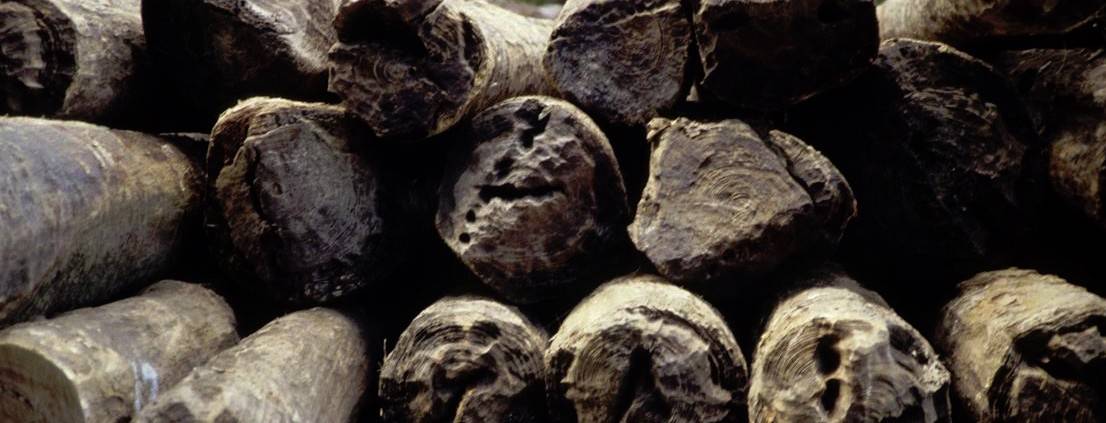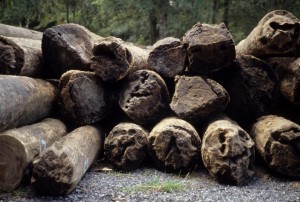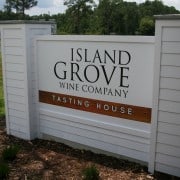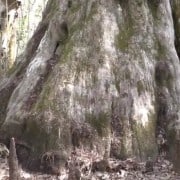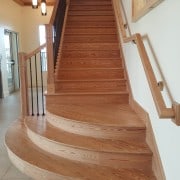The Art of Sawing River-Recovered® Logs
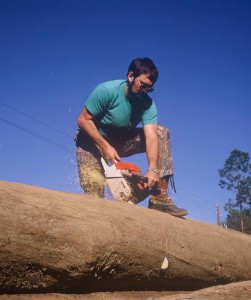
–Carol
The Art of Sawing River-Recovered® Logs
Sawing River-Recovered® logs is more of an art than a process. When a load of River-Recovered® logs arrives at the sawmill, the first thing we do is measure and ‘scale’ them to determine how many board feet each log will yield. There is an industry log ‘scale’ that gives the board feet based on the diameter and length of the log. Sometimes there are significant internal fractures or other issues that affect the board footage that we take into account.
We often take the largest and best-preserved logs back to our giant log pond, where they remain in water until the right project comes along. Once I determine which ones to saw, I examine each log and decide where to mark and cut the logs for the best yield. A 36’ log might make an 8’, 12’ and 14’ sections depending on where the crooks and bends are in the log. This is called ‘bucking’.
The logs all need a power wash to remove the sand and grit off the remaining bark and exterior of the logs before they are sawn. Sand will damage the large, expensive saw blades. When I bought a large headsaw and carriage several years ago, I assembled the most equipment we could possibly afford. The River-Recovered® heart pine is dense, resinous and heavy, while the heart cypress is huge, requiring heavy-duty equipment.
Once the logs are scaled, bucked, washed and loaded onto the saw deck, I mark any internal fractures with chalk so they can be easily seen from inside the saw cab. This lets me rotate the logs to render the best yield and highest quality while sawing. The company gives me a worklist of what I need to saw to meet custom orders. Strangely enough, the most difficult to achieve is the narrow plainsawn grades, particularly the 3” boards that provide a 2-1/2” face tongue and groove flooring.
To get the narrow plainsawn grade, I take the largest logs and create a cant (a rectangle) out of the center of the log and then slice it like a loaf of bread. The older Victorian era homes used the narrow widths because they did not have dry kilns and narrow widths naturally shrink less than wide wood.
I could saw the largest River-Recovered® heart pine logs into some of the richest, most beautiful 8” and 10” wide antique wood in the world. Given today’s kiln drying procedures, wide widths perform extremely well. Just take a look at the floor shown here on the beach in Florida. 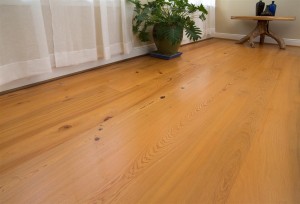
Goodwin provides what our clients need and we saw each and every log to order. We’re humbled to think that the loggers of the 19th century lost some of the densest and best antique heart pine and cypress to the river bottom. We love seeing these ancient logs arrive at the mill and value their beauty and worth. The ones shown here with the ax cut ends means they were all cut before the mid-1880s when loggers switched from axes to crosscut saws.
We love even more seeing your photos of beautiful wood in your home. Send us your photos please!
Yours truly,
George Goodwin

